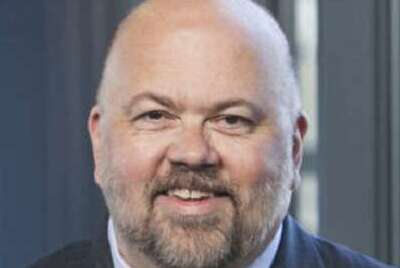
Insight by Workday Federal
Hybrid work brings new professional development possibilities to NASA
The virtual work environment is opening up new professional development opportunities for NASA employees.
NASA, like many federal agencies, is braving the new hybrid work environment.
The agency is testing out more permanent telework and remote work programs — arrangements where employees might only come to the office on occasion. The Biden administration sees telework and remote work as a way to expand talent pipelines and eventually cut back on the government’s real estate footprint.
But those remote or hybrid work arrangements will also open new professional development and training opportunities for employees, or at least that’s the way NASA sees it.
“With events being virtual there is much more access for more people than ever would have been possible before. Think about conferences and internal training offerings. It’s easy to add people to a Teams meeting to participate and get the benefit of keynote speakers or classroom materials,” said Jane Datta, NASA’s chief human capital officer. “It otherwise would have entailed quite a bit of travel money and time to take people from where they are. This notion that we can democratize access in a way for learning and development opportunities is a great thing and something that has been propelled forward by being virtual for as long as we have.”
Turnover is relatively low at NASA, just 4-to-6% a year, and that puts more pressure on the agency to tend to employee professional development. It’s why NASA puts a premium on developmental rotations, detail assignments and other kinds of experiential learning opportunities, Datta said.
Those experiences allow employees to learn new skills, expand their knowledge of another NASA mission area and build their leadership expertise — on top of the kinds of promotions that give them a path up the traditional career ladder.
“The key here is that you can do many more of those much more easily with virtual assignments,” Datta said. “It really just pushes open the doors of opportunity to our workforce to consider projects, rotations, details and these kinds of experiential learning opportunities that might not ever have been possible or even thought of or considered before.”
NASA has an internal talent marketplace tool that advertises rotations, detail assignments and special projects that employees throughout the organization can apply for, and Datta said she’s seen the workforce use that tool more frequently since the early days of the pandemic.
“We’ve seen a lot more movement of people to different types of assignments that are hosted in different locations, and that it’s really contributing to a positive employee development process,” she said.
Untying geography from a detail assignment or rotation makes those opportunities more attractive to more NASA employees, particularly those children and family obligations, Datta said.
“If we imagine a future where we really don’t worry so much about where people are living, then we actually could just have many more opportunities to secure employment relationships with people in diverse categories,” she said. “We can look at our succession pipelines and ensure they are diverse, and then do some good work about plugging people into work that will help them continue to grow.”
Like many in government, NASA is grappling with a difficult and often cumbersome federal hiring process, and it’s searching for new ways to make that process easier on both the applicant and the agency.
That work has become more urgent as NASA competes with other commercial space organizations, companies that perhaps didn’t exist just a decade or two ago.
“They are our partners,” Datta said. “However, when it comes to finding people to work at NASA we have to pay attention to the fact that other organizations can pay more. They might have other benefits that we can’t offer. We do need to pay attention to all aspects of things that either help or interfere with our ability to get top talent.”
Eventually, Datta envisions a more “porous border,” where employees can spend a few years working for NASA on a particular project, and then later spend time at another commercial space organization. Ideally, those employees would eventually return to the agency, bringing their unique experiences and new skills with them.
“This is a way for us to make sure that the level of skills remains really high, and we’re tapping into what’s happening in the world around us,” Datta said. “Think IT and cybersecurity as an example, or anything going on in the technology area. It’s great to be able to have the talent that comes in and learns but also gives. They share the more up-to-date knowledge that they bring from somewhere else.”
In recent years, NASA has been using term “limited appointment authorities” to bring on talent for temporary projects.
“It’s the idea that we have a workforce in the future who have been developed in part by being at NASA and in part by being in other organizations, so that we really are learning and giving people experiences that add up to a really meaningful career,” Datta said. “These are all aspects of the shift that we are making at NASA.”
Copyright © 2025 Federal News Network. All rights reserved. This website is not intended for users located within the European Economic Area.




